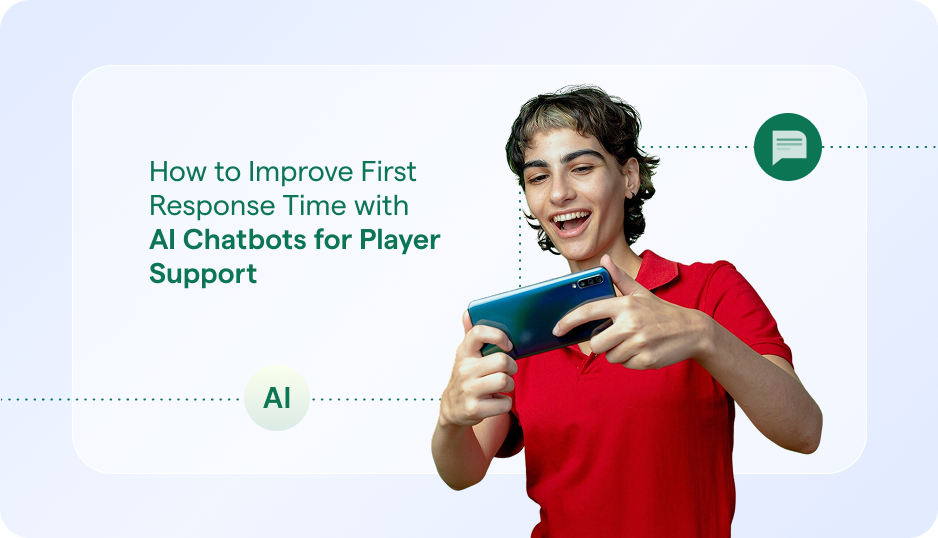Unless you’re in a market with zero competitors – and you’re the only one providing a service or selling a product that people absolutely need – you must attract and retain customers. And customer engagement is a critical part of that process.
What is customer engagement?
Customer Engagement is providing connected experience between an individual and a company. It’s fostered through personalization, communication, and paying attention to the customer experience throughout every channel, touchpoint, and interaction. Brands who show empathy to their customers, who speak to their customers’ values, and who make them feel like a valued part of their ‘tribe’ usually do well at customer engagement.
For companies, customer engagement means planning your interactions with customers across all channels with the goal of building a strong relationship (not necessarily making a sale!). This usually happens through channels like social media, email, web content, and other spaces where information is shared and consumed.
Why Is Customer Engagement Important?
Unless you excel at customer engagement, you’ll almost certainly lose customers to the competition – because smart competitors are paying attention to building their customer experience. Aside from that, it’s good financial and business sense to keep customers engaged and happy. Below are four excellent reasons why this is so.
Longer-Lasting Customer Relationships
Churn is the marketing term for when customers leave a company and take their business to the competition. By focusing on customer relationships instead of simply pushing sales, you make the customer feel important and nurtured. This will increase their satisfaction. It can even buy you some extra time if a problem arises; customers will be less likely to churn if they have a history of positive interactions with your brand.
Better Customer Retention
We all know the oft-quoted statistic that it’s 5 times more expensive to convert a new customer than to retain an active customer. But customer engagement goes beyond simply keeping customers; it’s about creating happy and attached customers who will choose your brand over the competition – even if they have to pay a bit more or go to some inconvenience for it.
Increased CLV
Customer lifetime value, or CLV, is the amount of profit a company can expect to gain during the time one customer remains an active consumer or buyer. Not only do happy customers buy more, they also stick with the company longer. Essentially, they raise profit while costing far less than new customers.
Improved Customer Service
A customer-centric approach is critical to successful customer service. And guess what is critical to a customer-centric approach? Feedback from engaged customers. While disappointed and disengaged customers will often simply stop doing business with a company, customers who feel their voice and opinion is important will help you see where you can improve – but only if you listen to what they’re saying both to you and about you on social media and other forums.
How Is Customer Engagement Measured?
So, how do you know if your customer engagement strategy is working? A look at the following indicators will let you know if you’re heading in the right direction:
- CTR (Click-Through Rate) and Form Fills
Click-through rates show how many people answered your call to action in an email, on a web page, etc. Along with form fills, lets you know if your offer is relevant to their needs and whether you’re effectively getting your message across. (Form fills provide an extra dimension here; they let you know if your offer is interesting enough to move a prospect to give you their contact details in exchange for more information.) If CTRs are low, it may not be that your product or service is irrelevant; it may be there’s a problem in how you’re communicating about it.
- Session Length
The amount of time spent on your company’s website, blog, etc. is an excellent barometer of how well you are capturing their interest – and potentially positioning yourself as a solution to a problem or their trustworthy ally. Investing in high-quality content that’s designed to meet your audience’s needs is a must here.
- Interactions, Comments, and Social Media Activity
Social media is great because it allows customers to connect with brands outside of formal channels (like the customer support line). It can be a fertile ground for new ideas and suggestions for improvement as well as a place to spot new trends. And for direct engagement with brand ambassadors, businesses can’t replace social media.
- Renewals and Repeat Purchases
This is a bit of a no-brainer, but unhappy customers are far less likely to be repeat customers. If your repeat purchase or renewal numbers are high, you’re probably doing something right in the area of customer engagement.
Customer Engagement Best Practices
Even if your current customer satisfaction metrics are high, you can always do more to create a positive customer experience. Here are four ways you can create better customer engagement regardless of your industry or market:
- Use clear, consistent messaging across all channels
Remember, omnichannel isn’t just a marketing term; it’s an actual expectation that customers have. It basically means they expect the same messaging and the same experience regardless of how they contact a company: email, chatbot, social media, etc. Of course, the mechanism of the communication may be different, but the messaging and how the customer feels about the experience should be consistent.
- Embrace personalization
If you want customers to feel devalued, send them an impersonal, irrelevant email. Companies work hard to avoid this because it’s an all-around terrible idea. Not only do today’s customers thrive on highly targeted, personalized interactions, they expect them. To succeed at personalization, you’ll need to understand customer segmentation and the many strategies and tools that allow you to connect to customers as individuals rather than as a faceless crowd.
- Create relevant content
This flows with the point made above; unless your content matches your target audience’s needs and values, it will be brushed aside. But carefully crafted content that shows you’ve thought about their goals or problems – and can help solve them – is a tremendous boost to customer engagement.
- Incorporate customer feedback
There’s one fail-safe way to make customers feel heard: listen to them. Pay attention to customer service trends, to complaints, to social media buzz, and to favorable and unfavorable reviews. They’re your customers telling you exactly what they like and what they don’t like about your brand.
How Helpshift Can Enhance Customer Engagement
With Helpshift, teams are gaining the tools they need to enhance their customer engagement with top-tie customer service. With unified conversational help features that are fast and effective but still feel as natural as talking to a friend, teams can benefit from stronger relationships and more efficient service.
Helpshift is helping to deliver frustration-free experiences to maximize engagement. Automatic issue categorization ensures queries are routed to useful resources and FAQs in the knowledge base to help customers to self-serve, or else promptly escalated to the right human team member. In-channel survey requetes are making it easier to capture and incorporate customer feedback in order to improve engagement going forward.
Related Resources
Product: Conversational Help



